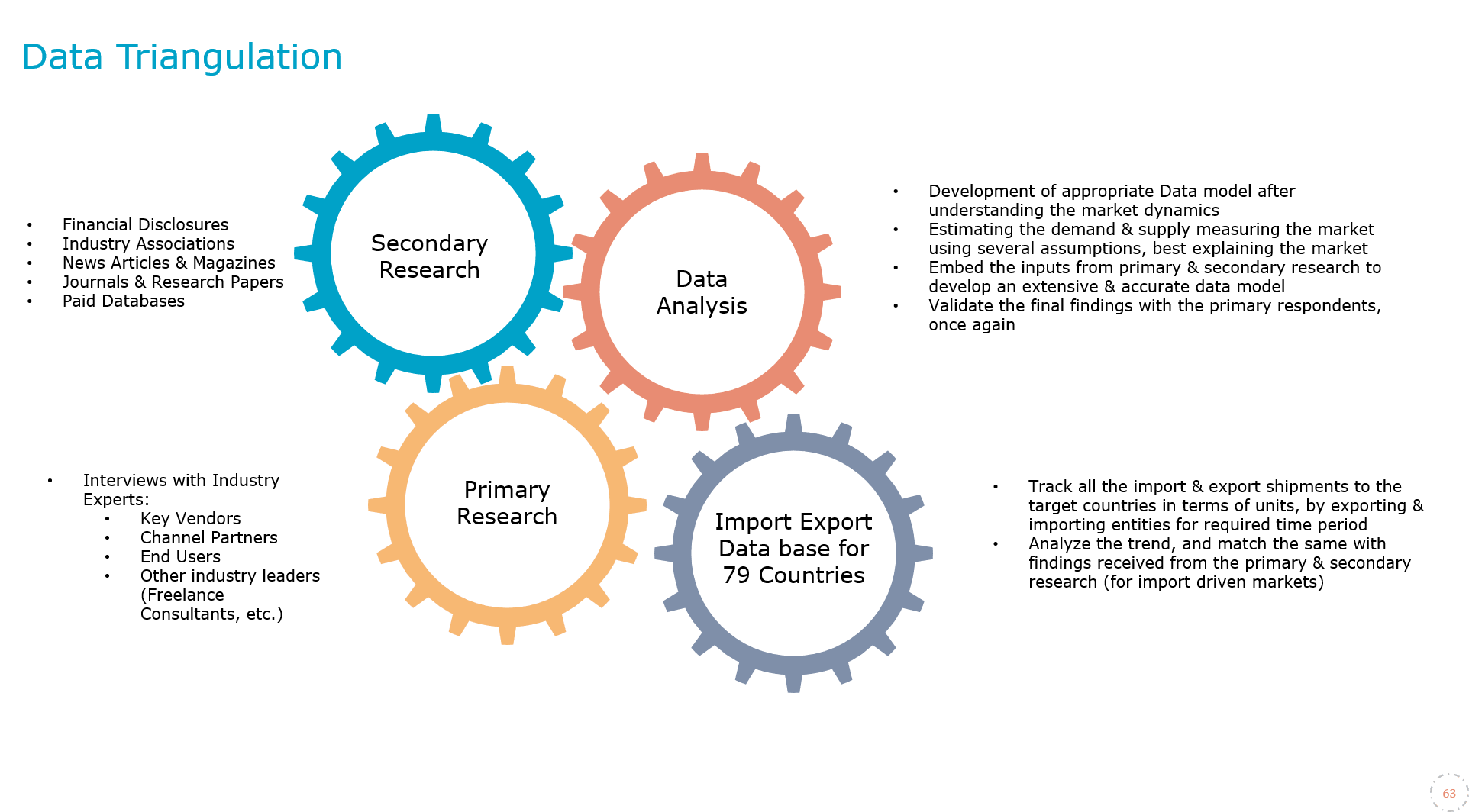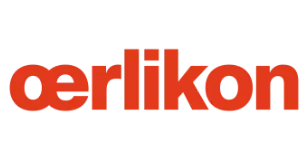
US Wind Turbine Market Research Report: Forecast (2025-2030)
US Wind Turbine Market Report - By Axis Type (Horizontal, Vertical), By Rating (Up to 1 MW, 1 MW - 2.5 MW, 2.5 MW - 5 MW, 5 MW – 10 MW, Above 10 MW), By Installation (Offshore, ...Onshore), By Component (Rotator Blade, Gearbox, Generator, Nacelle, Others), By Application (Industrial, Commercial, Residential, Utility, Others) and Others Read more
- Energy
- Dec 2024
- Pages 131
- Report Format: PDF, Excel, PPT
Market Definition
A turbine is a device that is essential in converting the energy from fluid or air into electricity. By utilizing a rotor system, a turbine can capture the rotational energy produced by the fluid to create various applications.
Market Insights & Analysis: US Wind Turbine Market (2025-2030):
The US Wind Turbine Market size has an installed capacity of 1,42,542 MW (with total projects of 1,699) in 2024 and is projected to reach 1,61,821 MW by 2030. Along with this, the market is estimated to grow at a CAGR of around 2.14% during the forecast period. Moreover, the new installation capacity of 2,118 MW in 2024 (across 28 projects) is projected to reach 3,213 MW by 2030 and is estimated to grow with a CAGR of around 7.19% during the forecast period, i.e. 2025-30. The wind turbine market in the US is increasing due to technological improvements, regulatory support, and increasing interest in sustainable energy, making it a key part of the renewable energy sector. Federal and state renewable energy guidelines, like the 2022 Inflation Reduction Act, are driving the market with extended tax credits for wind projects. Additionally, the growth of offshore wind power provides a major opportunity, with states such as New York and California at the leading edge of government efforts to access abundant offshore resources. Also, the emphasis on achieving energy independence and lowering dependence on foreign fossil fuels boosted the growth of the wind energy industry.
| Report Coverage | Details |
|---|---|
| Historical Years | 2020-23 |
|
Base Years
|
2024
|
|
Forecast Years
|
2025-30
|
| Market Value in 2024 | 1,42,542 MW (with total projects of 1,699) |
| Market Value in 2030 | 1,61,821 MW |
| CAGR (2025-30) | 2.14% |
| Top Key Players | GE Renewable Energy, NourNET, Vestas, EDGNEX Riyadh RUH-1, ReGen Powertech, Envision Group, NextEra Energy, GE Vernova, Suzlon Energy Limited, NORDEX SE, Goldwind Americas, and others |
| Key Report Highlights |
|
*Boost strategic growth with in-depth market analysis - Get a free sample preview today!
Moreover, it also tackles the challenge of decreasing carbon emissions in industries that are hard to decarbonize, including industrial manufacturing. The incorporation of wind electricity into the technology of green hydrogen is being seen as a potential game-changer. Promoting wind energy technology to international markets solidifies the United States’ role as a leader in renewable power innovation. Furthermore, the sector is experiencing a trend towards bigger turbine sizes, with certain offshore turbines surpassing a capacity of 12 MW such as GE Haliade-X a production of GE Vernova. This trend lowers the cost per megawatt and improves efficiency.
In addition, digital transformation is revolutionizing the industry by incorporating IoT technology in turbines for instant monitoring and maintenance forecasts. The improvements in technology like; floating wind turbines are facilitating growth in deeper waters, broadening the scope of potential offshore areas. Teamed up with federal tax benefits and strong state-level efforts, these changes could help move the US closer to achieving its net-zero emissions target, while also guaranteeing energy security and fostering job growth in the renewable energy industry.
Furthermore, hybrid projects that combine wind, solar, and battery storage are increasingly frequent, guaranteeing consistent electricity supply and enhancing the integration of renewable energy into the grid. Moreover, floating offshore wind platforms are becoming more popular, allowing for installation in deeper waters where conventional fixed platforms are impractical. Additionally, to achieve net-zero emissions by 2050, wind energy is seen as a vital part of the transition in the US. Stakeholders who take benefit of these factors, possibilities, and shifts will be in a robust role to benefit from the changing marketplace whilst addressing urgent climate and energy issues.
![US Wind Turbine Market Size, Share and Industry Trends [2030]](https://www.marknteladvisors.com/public/uploads/infographic/1733407025r.webp)
US Wind Turbine Market Driver:
Federal and State Renewable Energy Policies – Federal and state renewable energy policies that prioritize sustainability and decarbonization strongly drive the US Wind Turbine Market. The Inflation Reduction Act of 2022 offered generous incentives for renewable energy initiatives. The prolonged Production Tax Credits (PTC) and Investment Tax Credits (ITC) specifically for wind energy, secure economic feasibility for major projects. This policy extension is expected to spur the growth of wind energy projects nationwide. Also, Renewable Portfolio Standards (RPS) are essential at the state level. For example, California requires that 60% of its electricity must be generated from renewable sources by 2030, leading to a significant need for wind turbines.
In the same way, Texas, which is already the biggest wind energy producer in the US producing a staggering 28% of wind energy in the U.S. in 2023. Texas is continuing to increase its capacity with initiatives led by the state. The purpose of these standards is to help states diversify their energy sources boost domestic energy production and stimulate economic growth. Wind energy is a crucial part of the US energy transition due to strong regulations from both federal and state governments.
US Wind Turbine Market Opportunity:
Potential in New Wind Energy at Offshore and Repowering Aging Turbines – There is a significant possibility in offshore wind energy and updating old turbines in the US Wind Turbine Market. Offshore wind energy, largely underutilized, holds huge promise along US coastlines. According to NREL to satisfy 20% of the country's predicted electricity requirements by 2030, an additional 293.4 gigawatts of wind energy capacity would need to be implemented, alongside the existing 11.4 GW. This will result in a total of 304.8 gigawatts of wind energy, producing nearly 1,200 terawatt-hours of electricity annually. Approximately 18% or 54 GW of the total amount would be generated by offshore wind power. Initiatives such as; Vineyard Wind 1, are currently constructing the first offshore wind energy project on a large scale in the nation. The initiative aims to produce sustainable and affordable energy for more than 400,000 residences and commercial establishments in the Commonwealth. It will also lead to a yearly decrease of 1.6 million tons of carbon emissions.
Moreover, renewing old turbines is another important opportunity. As of January 2022, the U.S. Wind Turbine Database contains more than 70,800 turbines which will require repowering for the optimum result. Repowering boosts energy generation by up to 30% by enhancing parts such as blades, gearboxes, and control systems. Based on the Department of Energy findings, repowering initiatives have the potential to increase capacity significantly without the need for additional land or permits, thus maximizing resource efficiency.
US Wind Turbine Market Challenge:
Obstacles in Turbine Installations – The wind turbine industry in the US is encountering significant obstacles such as; environmental worries, wildlife impacts, and expensive installation. Common concerns during onshore installations include environmental impacts like noise pollution and land use. Offshore wind projects, despite their potential, are frequently examined for their effects on marine ecosystems. The National Audubon Society states that the installation of turbines could endanger bird migration routes, especially the golden eagle. In the same way, concerns have been raised regarding the impact of offshore wind farms on fish displacement and aquatic habitats. Another major obstacle is the financial responsibility. The initial setting up of wind turbines, especially those offshore, involves significant initial costs, with each MW costing over USD 2.6 million to USD 4 million. Moreover, offshore turbine maintenance costs are higher because of their distant settings and challenging marine environments. Thus, these factors are hindering the growth & expansion of the Wind Turbine Industry in the country.
US Wind Turbine Market Trend:
Rise of Hybrid Energy Projects – The US Wind Turbine Market is experiencing a significant shift with the emergence of hybrid energy projects that integrate wind power with solar and battery storage technologies. This holistic method increases energy production to maintain a stable power supply, even with limited wind or sunlight. Hybrid projects can enhance grid stability and decrease dependence on conventional energy sources. For instance, in California, facilities such as the Tehachapi Wind Energy Storage Project also use big batteries to store extra wind energy, addressing problems caused by unpredictability. The IRA provides tax incentives for energy storage and hybrid systems, motivating developers to implement these technologies. The trend supports the overall effort to diversify renewable energy, improve efficiency and resilience in the energy supply chain, and work towards the US's target of achieving net-zero emissions by 2050.
US Wind Turbine Market (2025-2030): Segmentation Analysis
The US Wind Turbine Market study of MarkNtel Advisors evaluates & highlights the major trends and influencing factors in each segment. It includes predictions for the period 2025–2030 at the global level. Based on the analysis, the market has been further classified as:
Based on Application
- Industrial
- Commercial
- Residential
- Utility
- Others
The utility segment is dominating the US Wind Turbine Market by holding approximately 80% share of the total market. It is powered by the development of large wind energy projects aimed at satisfying the increasing need for electricity. Utilities are in the leading position because of their ability to incorporate wind turbines into central power grids, guaranteeing a steady and dependable energy source. Projects like; the Roscoe Wind Farm in Texas showcase the size and influence of this industry sector. Such farms play a crucial role in supplying renewable energy to millions of households with a capacity of over 780 MW. Federal benefits, such as Production Tax Credits (PTC), also support this sector by lowering expenses for building large-scale projects. In addition, utilities frequently collaborate with private companies using Power Purchase Agreements (PPAs) to guarantee sustainable financial success, bolstering their dominance in the wind turbine industry.
Based on the Axis Type
- Horizontal
- Vertical
Horizontal axis wind turbines (HAWT) are the primary choice in the US Wind Turbine Market accounting for almost 95% of the entire market as their efficiency and popularity are in large-scale and land-based installations. These turbines, known for their blades that rotate in alignment with the wind, are very efficient at converting wind energy into electricity. They are more powerful due to greater energy output, enabled by larger blade sizes and improved aerodynamic designs. Ventures such as the Alta Wind Energy Center in California demonstrate the scalability and efficiency of Horizontal Axis Wind Turbines, making them the top choice for large wind farms. The advancements in blade design and materials improve durability and performance, especially in high-wind regions.
US Wind Turbine Industry Recent Development:
- November 2024: The U.S. Department of Energy announced four high-voltage direct current (HVDC) transmission research projects to enhance renewable energy integration. The $11 million program aims to reduce transmission costs by 35% by 2035 and promote widespread technology adoption, with funding from DOE offices.
- July 2024: Vestas secured a deal to deliver 60 V150-4.2 MW wind turbines for a 252 MW venture in the United States. The project will be Vestas' largest order in North America this year.
Gain a Competitive Edge with Our US Wind Turbine Market Report
- US Wind Turbine Market Report by MarkNtel Advisors provides a detailed & thorough analysis of market size, growth rate, competitive landscape, and key players. This comprehensive analysis helps business organizations to gain a holistic understanding of market dynamics & make informed decisions.
- This report also highlights current market trends & future projections, allowing business organizations to identify emerging opportunities & potential challenges. By understanding market forecasts, companies can align their strategies & stay ahead of the competition.
- The US Wind Turbine Market Report aids in assessing & mitigating risks associated with entering or operating in the market. By understanding market dynamics, regulatory frameworks, and potential challenges, business organizations can develop strategies to minimize risks & optimize their operations.
Frequently Asked Questions
- Market Segmentation
- Research Methodology
- Product Definition
- Research Process
- Assumptions
- Executive Summary
- US Wind Turbine Market Trends & Development
- US Wind Turbine Market Industry Dynamics
- Drivers
- Challenges
- US Wind Turbine Market Hotspot & Opportunities
- US Wind Turbine Market Policies, Regulations, Product Standards
- US Wind Turbine Market Outlook, 2020-2030F
- Market Size & Analysis
- By Revenues (Million)
- Market Share & Analysis
- By Axis Type
- Horizontal - Market Size & Forecast 2020-2030F, USD Million
- Vertical - Market Size & Forecast 2020-2030F, USD Million
- By Rating
- Up to 1 MW - Market Size & Forecast 2020-2030F, USD Million
- 1 MW - 2.5 MW - Market Size & Forecast 2020-2030F, USD Million
- 2.5 MW - 5 MW - Market Size & Forecast 2020-2030F, USD Million
- 5 MW – 10 MW - Market Size & Forecast 2020-2030F, USD Million
- Above 10 MW - Market Size & Forecast 2020-2030F, USD Million
- By Installation
- Offshore - Market Size & Forecast 2020-2030F, USD Million
- Onshore - Market Size & Forecast 2020-2030F, USD Million
- By Component
- Rotator Blade - Market Size & Forecast 2020-2030F, USD Million
- Gearbox - Market Size & Forecast 2020-2030F, USD Million
- Generator - Market Size & Forecast 2020-2030F, USD Million
- Nacelle - Market Size & Forecast 2020-2030F, USD Million
- Others - Market Size & Forecast 2020-2030F, USD Million
- By Application
- Industrial - Market Size & Forecast 2020-2030F, USD Million
- Commercial - Market Size & Forecast 2020-2030F, USD Million
- Residential - Market Size & Forecast 2020-2030F, USD Million
- Utility - Market Size & Forecast 2020-2030F, USD Million
- Others - Market Size & Forecast 2020-2030F, USD Million
- By Region
- North
- South
- East
- West
- By Company
- Competition Characteristics
- Company Share & Analysis
- By Axis Type
- Market Size & Analysis
- US Industrial Wind Turbine Market Outlook, 2020-2030F
- Market Size & Analysis
- By Revenue (USD Million)
- Market Share & Analysis
- By Axis Type - Market Size & Forecast 2020-2030F, USD Million
- By Rating - Market Size & Forecast 2020-2030F, USD Million
- By Installation - Market Size & Forecast 2020-2030F, USD Million
- By Component - Market Size & Forecast 2020-2030F, USD Million
- Market Size & Analysis
- US Commercial Wind Turbine Market Outlook, 2020-2030F
- Market Size & Analysis
- By Revenue (USD Million)
- Market Share & Analysis
- By Axis Type - Market Size & Forecast 2020-2030F, USD Million
- By Rating - Market Size & Forecast 2020-2030F, USD Million
- By Installation - Market Size & Forecast 2020-2030F, USD Million
- By Component - Market Size & Forecast 2020-2030F, USD Million
- Market Size & Analysis
- US Residential Wind Turbine Market Outlook, 2020-2030F
- Market Size & Analysis
- By Revenue (USD Million)
- Market Share & Analysis
- By Axis Type - Market Size & Forecast 2020-2030F, USD Million
- By Rating - Market Size & Forecast 2020-2030F, USD Million
- By Installation - Market Size & Forecast 2020-2030F, USD Million
- By Component - Market Size & Forecast 2020-2030F, USD Million
- Market Size & Analysis
- US Utility Wind Turbine Market Outlook, 2020-2030F
- Market Size & Analysis
- By Revenue (USD Million)
- Market Share & Analysis
- By Axis Type - Market Size & Forecast 2020-2030F, USD Million
- By Rating - Market Size & Forecast 2020-2030F, USD Million
- By Installation - Market Size & Forecast 2020-2030F, USD Million
- By Component - Market Size & Forecast 2020-2030F, USD Million
- Market Size & Analysis
- US Wind Turbine Market Key Strategic Imperatives for Growth & Success
- Competitive Outlook
- Company Profiles
- GE Renewable Energy
- Business Description
- Type Portfolio
- Strategic Alliances or Partnerships
- Recent Developments
- Financial Details
- Others
- NourNET
- Business Description
- Type Portfolio
- Strategic Alliances or Partnerships
- Recent Developments
- Financial Details
- Others
- Vestas
- Business Description
- Type Portfolio
- Strategic Alliances or Partnerships
- Recent Developments
- Financial Details
- Others
- EDGNEX Riyadh RUH-1
- Business Description
- Type Portfolio
- Strategic Alliances or Partnerships
- Recent Developments
- Financial Details
- Others
- ReGen Powertech
- Business Description
- Type Portfolio
- Strategic Alliances or Partnerships
- Recent Developments
- Financial Details
- Others
- Envision Group
- Business Description
- Type Portfolio
- Strategic Alliances or Partnerships
- Recent Developments
- Financial Details
- Others
- NextEra Energy
- Business Description
- Type Portfolio
- Strategic Alliances or Partnerships
- Recent Developments
- Financial Details
- Others
- GE Vernova
- Business Description
- Type Portfolio
- Strategic Alliances or Partnerships
- Recent Developments
- Financial Details
- Others
- Suzlon Energy Limited
- Business Description
- Type Portfolio
- Strategic Alliances or Partnerships
- Recent Developments
- Financial Details
- Others
- NORDEX SE
- Business Description
- Type Portfolio
- Strategic Alliances or Partnerships
- Recent Developments
- Financial Details
- Others
- Goldwind Americas
- Business Description
- Type Portfolio
- Strategic Alliances or Partnerships
- Recent Developments
- Financial Details
- Others
- Others
- GE Renewable Energy
- Company Profiles
- Disclaimer
MarkNtel Advisors follows a robust and iterative research methodology designed to ensure maximum accuracy and minimize deviation in market estimates and forecasts. Our approach combines both bottom-up and top-down techniques to effectively segment and quantify various aspects of the market. A consistent feature across all our research reports is data triangulation, which examines the market from three distinct perspectives to validate findings. Key components of our research process include:
1. Scope & Research Design At the outset, MarkNtel Advisors define the research objectives and formulate pertinent questions. This phase involves determining the type of research—qualitative or quantitative—and designing a methodology that outlines data collection methods, target demographics, and analytical tools. They also establish timelines and budgets to ensure the research aligns with client goals.
2. Sample Selection and Data Collection In this stage, the firm identifies the target audience and determines the appropriate sample size to ensure representativeness. They employ various sampling methods, such as random or stratified sampling, based on the research objectives. Data collection is carried out using tools like surveys, interviews, and observations, ensuring the gathered data is reliable and relevant.
3. Data Analysis and Validation Once data is collected, MarkNtel Advisors undertake a rigorous analysis process. This includes cleaning the data to remove inconsistencies, employing statistical software for quantitative analysis, and thematic analysis for qualitative data. Validation steps are taken to ensure the accuracy and reliability of the findings, minimizing biases and errors.

4. Data Forecast and FinalizationThe final phase involves forecasting future market trends based on the analyzed data. MarkNtel Advisors utilize predictive modeling and time series analysis to anticipate market behaviors. The insights are then compiled into comprehensive reports, featuring visual aids like charts and graphs, and include strategic recommendations to inform client decision-making









